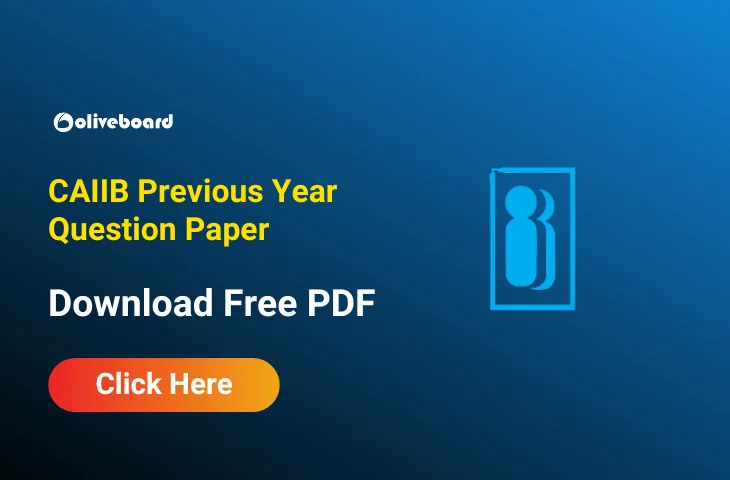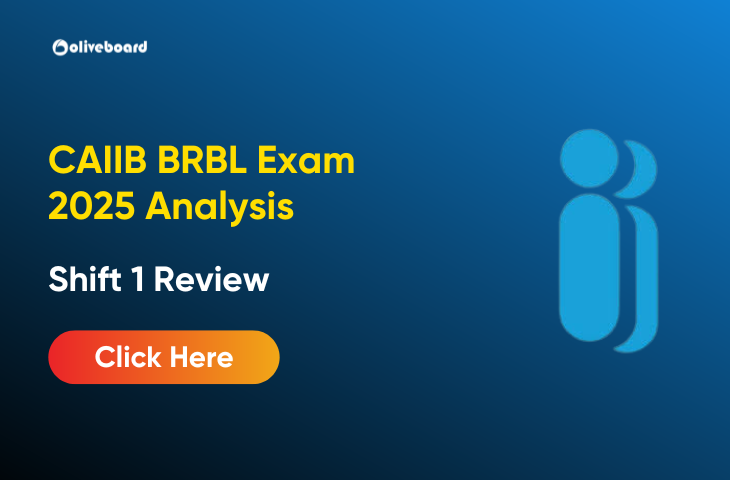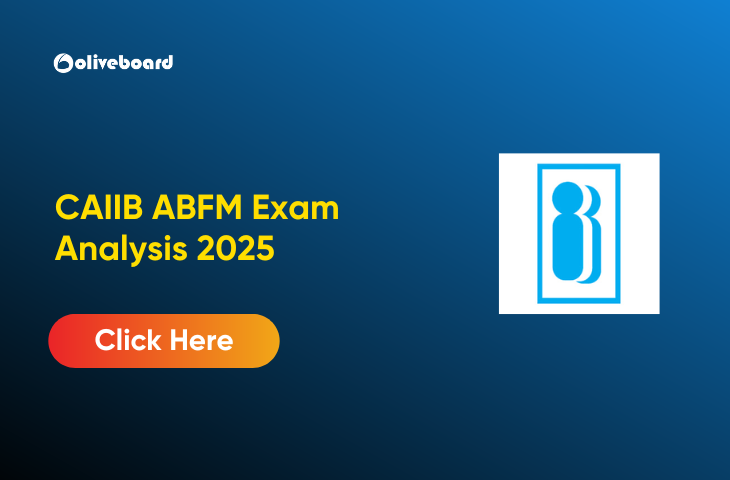Top 50 Most Repetitive CAIIB BFM MCQs
The CAIIB (Certified Associate of Indian Institute of Bankers) exam is an important qualification for bankers in India. One of the important subjects in this exam is Bank Financial Management (BFM), which focuses on the financial aspects of banking. This article presents 50 Most Important MCQs for CAIIB Bank Financial Management (BFM) to help you prepare effectively for the exam.
Why Bank Financial Management (BFM) is Important
Bank Financial Management (BFM) is a critical subject for anyone working in the banking sector. It deals with managing a bank’s finances, ensuring that the bank remains financially stable and profitable. Topics covered include financial analysis, risk management, capital management, and asset-liability management.
- Managing the bank’s financial performance
- Identifying and managing financial risks
- Ensuring regulatory compliance
- Making investment decisions
- Managing a bank’s capital efficiently
Top 50 MCQs for CAIIB Bank Financial Management (BFM)
Here are 50 important MCQs that every candidate should study for the CAIIB BFM paper
- What is the primary objective of financial management in banks?
a) Profit maximization
b) Risk minimization
c) Ensuring liquidity
d) Value maximization
Answer: d) - Which of the following is considered a source of long-term funds for banks?
a) Savings accounts
b) Fixed deposits
c) Share capital
d) Borrowings from RBI
Answer: c) - What does ‘liquidity risk’ in banking refer to?
a) The risk of a borrower defaulting on a loan
b) The risk of the bank’s inability to meet short-term obligations
c) The risk of changes in interest rates
d) The risk of currency fluctuations
Answer: b) - The ‘Net Interest Margin’ (NIM) is calculated by dividing:
a) Interest income by total assets
b) Net interest income by total assets
c) Operating income by total liabilities
d) Operating profit by total equity
Answer: b) - Which of the following is NOT a function of the RBI?
a) Monetary policy formulation
b) Bankers’ bank
c) Regulation of currency circulation
d) Public sector bank ownership
Answer: d) - What does ‘Credit Risk’ in banking refer to?
a) The risk of default by the borrower
b) The risk of loss due to fraud
c) The risk of market fluctuations affecting profits
d) The risk of interest rate changes
Answer: a) - The ‘Cost-to-Income Ratio’ is used to measure:
a) The profitability of a bank
b) The operational efficiency of a bank
c) The capital adequacy of a bank
d) The market share of a bank
Answer: b) - What does ‘Capital Adequacy Ratio’ (CAR) measure?
a) The amount of capital a bank holds relative to its risk-weighted assets
b) The profit margin of a bank
c) The operational efficiency of a bank
d) The liquidity position of a bank
Answer: a) - What is the primary risk faced by banks when lending in foreign currencies?
a) Credit risk
b) Interest rate risk
c) Currency risk
d) Liquidity risk
Answer: c) - Which of the following is a measure of the profitability of a bank?
a) Return on Equity (ROE)
b) Cost-to-Income Ratio
c) Loan-to-Deposit Ratio
d) Capital Adequacy Ratio (CAR)
Answer: a) - The ‘Loan-to-Deposit Ratio’ (LDR) is used to measure:
a) The bank’s capital adequacy
b) The bank’s lending relative to its deposit base
c) The bank’s profitability
d) The bank’s liquidity risk
Answer: b) - What is the effect of an increase in interest rates on the market value of a bank’s bond portfolio?
a) It increases the market value
b) It decreases the market value
c) It does not affect the market value
d) It increases the yield
Answer: b) - Which of the following is an example of an off-balance sheet item for a bank?
a) Loans to customers
b) Derivative contracts
c) Deposits from customers
d) Equity capital
Answer: b) - What does ‘Banking Book’ refer to?
a) The portion of the bank’s balance sheet containing non-financial assets
b) The portion of the bank’s balance sheet containing customer loans and deposits
c) The regulatory framework for capital adequacy
d) The record of bank’s foreign exchange transactions
Answer: b) - What is the effect of a reduction in the Statutory Liquidity Ratio (SLR)?
a) It increases the liquidity of the banking system
b) It decreases the bank’s lending capacity
c) It does not affect the banking system
d) It decreases the profitability of banks
Answer: a) - Which of the following ratios is used to measure the risk of a bank’s capital structure?
a) Debt-to-Equity Ratio
b) Return on Equity (ROE)
c) Cost-to-Income Ratio
d) Loan-to-Deposit Ratio
Answer: a) - What is ‘Asset-Liability Management’ (ALM) used to manage in a bank?
a) Credit risk
b) Interest rate risk
c) Liquidity risk
d) Operational risk
Answer: c) - Which of the following is the main focus of the Basel III norms?
a) Liquidity management
b) Capital adequacy
c) Loan provisioning
d) Risk management
Answer: b) - The ‘Return on Assets’ (ROA) is a measure of:
a) A bank’s profitability relative to its total assets
b) The bank’s operational efficiency
c) The bank’s credit risk
d) The bank’s liquidity position
Answer: a) - What does ‘Securitization’ in banking refer to?
a) The process of borrowing funds from the market
b) The conversion of assets into tradable securities
c) The provision of loans to customers
d) The sale of a bank’s equity to the public
Answer: b) - What is the primary objective of ‘Risk-Based Capital Adequacy Ratio’ (RBCAR)?
a) To ensure that banks have sufficient capital to cover their operational risks
b) To protect depositors from default
c) To ensure banks can absorb losses from their risky assets
d) To encourage banks to offer higher interest rates
Answer: c) - Which of the following is a type of ‘interest rate risk’ for banks?
a) Repricing risk
b) Credit risk
c) Operational risk
d) Liquidity risk
Answer: a) - Which of the following best defines ‘Net Interest Income’ (NII) for a bank?
a) Interest income minus interest expense
b) Total income generated from fees
c) Income from the sale of assets
d) Profit from the bank’s operations after tax
Answer: a) - What does ‘CRR’ (Cash Reserve Ratio) refer to in banking?
a) The percentage of a bank’s reserves to be maintained with RBI
b) The amount of reserves a bank can hold with itself
c) The interest rate charged by RBI to commercial banks
d) The proportion of a bank’s assets in government securities
Answer: a) - What does ‘Yield Curve’ indicate in banking?
a) The relationship between bond yields and interest rates
b) The relationship between a bank’s liabilities and assets
c) The relationship between inflation rates and interest rates
d) The maturity structure of a bank’s loans
Answer: a) - What is the impact of an increase in the Reverse Repo Rate on bank liquidity?
a) It increases the liquidity in the banking system
b) It decreases the liquidity in the banking system
c) It has no impact on liquidity
d) It reduces interest rates
Answer: b) - What is the significance of ‘Credit Rating’ in banking?
a) It measures the profitability of a bank
b) It indicates the risk associated with a bank’s loan portfolio
c) It reflects the bank’s operational efficiency
d) It indicates the bank’s liquidity position
Answer: b) - What does ‘Basel II’ focus on in terms of capital adequacy?
a) Setting uniform minimum capital standards for banks
b) Providing guidelines for liquidity management
c) Regulating the foreign exchange risk for banks
d) Determining the maximum interest rate that banks can charge
Answer: a) - What is the key purpose of liquidity management in a bank?
a) To maximize profits
b) To maintain a balance between risk and return
c) To ensure sufficient funds are available to meet short-term obligations
d) To optimize customer satisfaction
Answer: c) - Which of the following is a major component of a bank’s liabilities?
a) Deposits
b) Shareholder equity
c) Loans
d) Investments
Answer: a) - What does the ‘Return on Equity’ (ROE) ratio measure?
a) The bank’s profitability relative to its equity
b) The bank’s operational efficiency
c) The bank’s capital adequacy
d) The bank’s credit risk
Answer: a) - What does ‘spread’ between lending and deposit rates represent for a bank?
a) The bank’s profitability
b) The cost of funding for the bank
c) The interest rate risk faced by the bank
d) The quality of the bank’s loan book
Answer: a) - Which of the following is an example of a long-term liability for a bank?
a) Long-term debt
b) Demand deposits
c) Savings accounts
d) Short-term loans
Answer: a) - The ‘Capital Adequacy Ratio’ (CAR) helps in measuring:
a) A bank’s ability to repay its customers
b) The financial health of a bank
c) The bank’s dividend payout ratio
d) The ratio of NPAs to total loans
Answer: b) - Which of the following is an example of a non-financial performance indicator for banks?
a) Customer satisfaction
b) Return on Assets (ROA)
c) Profitability ratio
d) Net interest margin
Answer: a) - What is the impact of an increase in the Cash Reserve Ratio (CRR) on a bank’s lending capacity?
a) It increases the lending capacity
b) It decreases the lending capacity
c) It does not affect the lending capacity
d) It increases the interest rates on loans
Answer: b) - What does the term ‘interest rate risk’ refer to?
a) The risk that a bank’s interest income will fall due to changes in market rates
b) The risk of default by the borrower
c) The risk of changes in foreign exchange rates
d) The risk of changes in the inflation rate
Answer: a) - Which of the following is NOT a part of the monetary policy tools of the RBI?
a) Repo rate
b) Reverse repo rate
c) Cash Reserve Ratio (CRR)
d) Corporate tax rate
Answer: d) - The ‘Basel II’ framework primarily focuses on which aspect of banking?
a) Operational risk management
b) Capital adequacy
c) Liquidity management
d) Customer protection
Answer: b) - What does the term ‘duration’ refer to in banking?
a) The time period for which a bank holds assets
b) The length of time a loan is to be repaid
c) The sensitivity of the value of a bond to interest rate changes
d) The total time a bank has been in business
Answer: c) - Which of the following is considered an off-balance sheet item for banks?
a) Loans to customers
b) Derivative contracts
c) Deposits from customers
d) Equity capital
Answer: b) - Which of the following is an indicator of a bank’s operational efficiency?
a) Cost-to-Income Ratio
b) Loan-to-Deposit Ratio
c) Return on Equity (ROE)
d) Return on Assets (ROA)
Answer: a) - What is the primary objective of the ‘Reverse Repo Rate’?
a) To increase the supply of money in the banking system
b) To encourage banks to borrow from the RBI
c) To control inflation and manage liquidity
d) To increase the lending capacity of commercial banks
Answer: c) - Which of the following is a characteristic of a term loan?
a) It is typically for a long duration
b) It does not require collateral
c) It is repaid in a lump sum
d) It is usually short-term
Answer: a) - What is the significance of the ‘SLR’ (Statutory Liquidity Ratio) for banks?
a) It is the minimum percentage of reserves that banks must maintain in the form of cash, gold, or government securities
b) It determines the base interest rate for banks
c) It controls inflation
d) It regulates foreign exchange transactions
Answer: a) - Which of the following is a major component of a bank’s liabilities?
a) Deposits
b) Shareholder equity
c) Loans
d) Investments
Answer: a) - What does the ‘Price-to-Earnings’ ratio (P/E ratio) measure?
a) The profitability of a bank
b) The market valuation of a bank’s shares
c) The risk level of the bank’s loans
d) The efficiency of the bank’s operations
Answer: b) - Which of the following is a liquidity management tool used by banks?
a) Repo rate
b) Banker’s acceptance
c) Savings accounts
d) Demand drafts
Answer: b) - Which ratio is used to measure the financial stability of a bank?
a) Capital Adequacy Ratio (CAR)
b) Return on Assets (ROA)
c) Cost-to-Income Ratio
d) Loan-to-Deposit Ratio
Answer: a) - What is the key purpose of liquidity management in a bank?
a) To maximize profits
b) To maintain a balance between risk and return
c) To ensure sufficient funds are available to meet short-term obligations
d) To optimize customer satisfaction
Answer: c)
Financial Ratios in Bank Financial Management
The following table summarizes key financial ratios used in bank financial management:
| Ratio | Formula | Purpose |
| Capital Adequacy Ratio (CAR) | (Tier 1 + Tier 2 Capital) / Risk-Weighted Assets | Measures a bank’s financial strength |
| Liquidity Coverage Ratio (LCR) | High-Quality Liquid Assets / Total Net Cash Flows | Ensures a bank can meet short-term obligations |
| Return on Assets (ROA) | Net Income / Total Assets | Measures how efficiently a bank uses its assets |
| Return on Equity (ROE) | Net Income / Shareholder’s Equity | Indicates profitability for equity investors |
| Net Interest Margin (NIM) | (Interest Income – Interest Expense) / Average Earning Assets | Measures profitability from core banking operations |
Also Check:
| Related Article | Link |
| CAIIB BRBL Questions | Click here to Check |
| Top 50 Most Repetitive CAIIB ABM MCQs | Click here to Check |
| Top 50 Most Repetitive CAIIB BRBL MCQs | Click here to Check |
| ABM Exam Important MCQs | Click here to Check |
| Top 50 Most Repetitive CAIIB ABFM MCQs | Click here to Check |
Conclusion
In conclusion, preparing for the CAIIB BFM exam requires a deep understanding of key concepts like financial management, risk management, and asset-liability management. By practicing these 50 important MCQs, you will be better equipped to tackle the exam.
Top 50 Most Repetitive CAIIB BFM MCQs – FAQs
Ans. Key topics include financial ratios, capital adequacy, liquidity management, and risk management.
Ans. Focus on understanding the core concepts in financial management and practice frequently asked questions.
Ans. They are repeated because they test fundamental concepts that are essential for the banking industry.
Ans. Focus on questions related to risk management, treasury operations, and financial regulations, as they are frequently tested.
- CAIIB BRBL Questions with Detailed Solutions and Answers

- CAIIB Previous Year Question Paper, Download Free PDF

- CAIIB Electives Exam Analysis 2025, December All Paper Review

- CAIIB BRBL Exam Analysis 2025, December Cycle Review

- CAIIB ABFM Exam Analysis 2025, 13th December Review

- CAIIB BFM Exam Analysis 2025, 7th December Difficulty Level


Hello there! I’m a dedicated Government Job aspirant turned passionate writer & content marketer. My blogs are a one-stop destination for accurate and comprehensive information on exams like Regulatory Bodies, Banking, SSC, State PSCs, and more. I’m on a mission to provide you with all the details you need, conveniently in one place. When I’m not writing and marketing, you’ll find me happily experimenting in the kitchen, cooking up delightful treats. Join me on this journey of knowledge and flavors!
